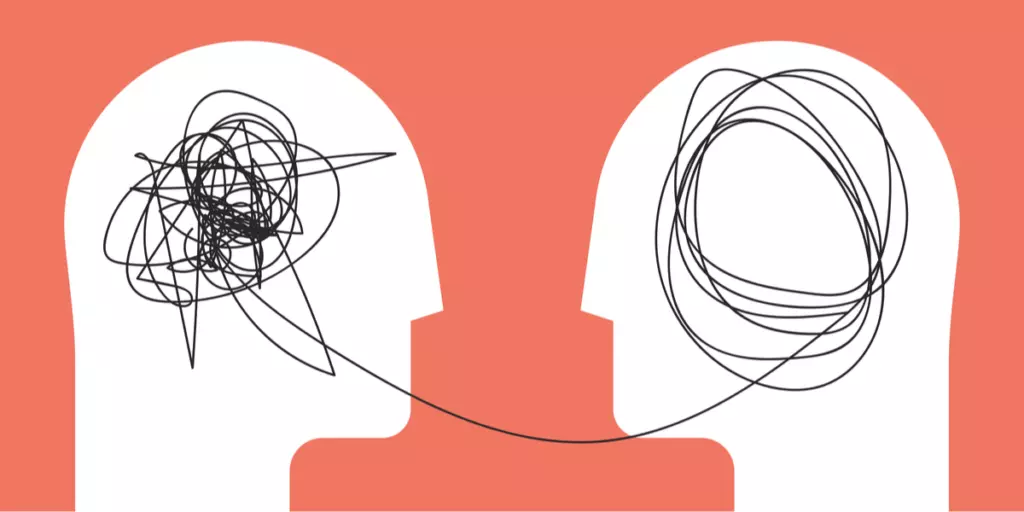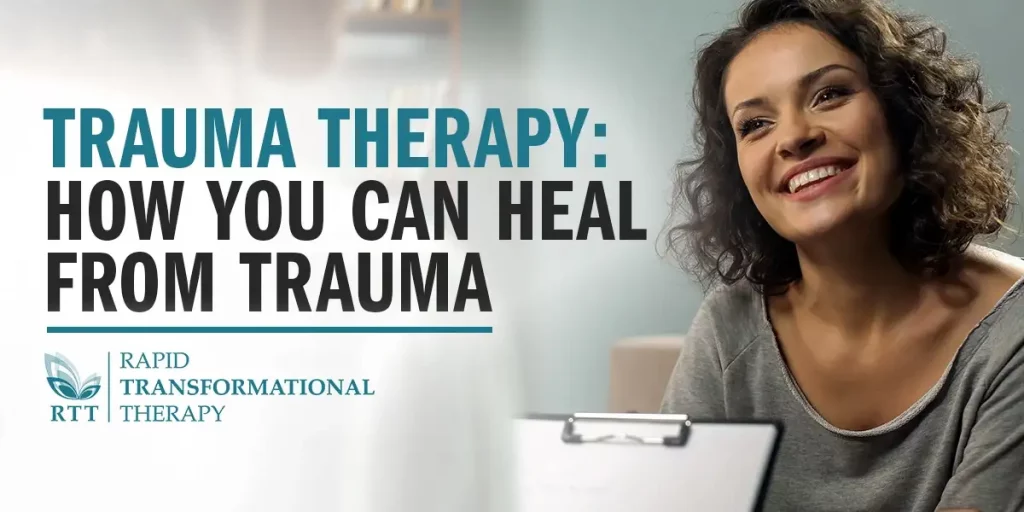You know you have unresolved symptoms from trauma. Yet, you are not sure how to approach it. Perhaps you are dealing with deep-rooted childhood trauma or the consequences of a recent traumatic event. Either way, trauma can be tough to navigate through—especially on your own.
You may feel lost and uncertain. You are ready to move forward, and you are wondering how you can do that.
The good news is that it’s entirely possible to heal and get past your trauma. Seeking out trauma therapy can help accelerate the process, lead to improved outcomes, and a clearer understanding of how to move forward with your life.
In this article, we hope to provide a bit more education when it comes to trauma and trauma therapy.
You will learn:
- What is emotional trauma is and what are its types?
- What is trauma therapy and how does It work?
- The best trauma therapy to heal emotional trauma
So, let’s take a look at where you can begin your healing journey and start paving your way toward a brighter and happier future.
What is Emotional Trauma?

Emotional (psychological or mental) trauma results from extremely terrible or stressful events, such as a car accident, a natural disaster, or rape. Undeniably, these events are extraordinarily tough to cope with.
Immediately following such trauma, you may feel in shock or disbelief. You may even deny that it happened. Yet, as time goes on, you begin to notice other symptoms, such as flashbacks, unpredictable and extreme emotions, strained relationships, headaches, nausea, and more.
In many traumatic events, an individual can develop simple or complex post-traumatic stress disorder (PTSD).
Single traumatic events often lead to simple PTSD. Chronic or persistent traumatic events that continue for some time may result in complex PTSD, which is a more serious anxiety disorder.
Coping and moving on from such traumas are tied to unique challenges specific to the individual and the event that transpired. For example, if the event involved a car crash, getting into a car afterward may present serious challenges or extreme reactions.
In order to maintain a healthy body, mind, and relationships, look for ways to heal and adopt healthy ways to cope with trauma and its symptoms.
A recommended route to begin your emotional healing process is trauma therapy.
Working with a professional will help you to let go of negative memories and emotional pain and focus your energy on building your future.
What is Trauma Therapy and How Does It Work?

Trauma therapy is a specific type of therapy that aims to recognize and understand how traumatic events or experiences have impacted your mental, emotional, behavioral, and physical well-being.
The goal is to find strategies and build skills that help you cope, understand, and process these traumatic experiences. As a result, you can reframe the situation, attach healthier and constructive meaning to the experience, and move forward.
It is not recommended to work on healing your trauma on your own as most of us don’t have the right tools and knowledge to support ourselves in this process. You may get so deep into the memory of a traumatic event that you “relive” it again. This experience can retraumatize you. In such situations, you need a trained person to help you get out of the “danger zone” and create a safe space for you to calm down and relax.
That’s why the most efficient and safe way to work on healing from trauma is by working with a professional trauma therapist.
The goal of working with a professional is to access them in a safe, healthy, and effective way. A professional trauma therapist understands the inner workings of trauma. They help you navigate your emotions in a healthy and constructive way and teach you how to deal with triggering situations.
Marisa Peer, a world-renowned therapist, bestselling author, and motivational speaker has helped thousands of people to unravel the mental blocks and trauma rooted deep within your subconscious mind.
“The only thing you can control is your thoughts. Your thoughts control your feelings. Your feelings control your actions. And your actions control your events. So if you change your thinking, you can change everything.”—Marisa Peer
Best Trauma Therapy to Heal Emotional Trauma

By now you are probably wondering which form of therapy is best for healing trauma.
Trauma therapy comes in many forms. As previously stated, the type of trauma you experience will determine what type of therapy or intervention works best for you.
Everyone is different. It is all about finding the right fit that allows you to face and process your trauma in order for you to move on to a better life.
Trauma therapy methods for coping and healing include:
Heart Rate Variability Training (HRVT)
The HRVT method involves monitoring of your heart rate. It can help you determine when your heart rate begins to spike, which may allow the identification of anxiety or panic triggers.
HRVT method allows you to recognize when you are getting triggered early on and potentially step back from those emotions before they take over. When you can take a step back in a sound and stable state, you will be able to understand your emotions, situations, and yourself better.
One way to incorporate this method of trauma therapy as part of your recovery is by purchasing a heart rate monitor device. You can take notice when your heart rate is beginning to spike before your emotions come to play and bring awareness to your triggers.
Your therapist may also recommend using a heart rate monitor to help you apply coping skills and techniques in real-world situations.
Eye Movement Desensitization and Reprocessing (EMDR)
Trauma can change the way your brain works and how your neurons interact with one another. EMDR offers a way to rework or re-sync the brain and the triggers that cause emotional outbursts. It is a type of psychotherapy treatment.
During a typical EMDR session, you use your eyes to follow a light that moves from left to right.
By moving your eyes back and forth at different speeds, the process is said to reset your brain’s circuit allowing you to access and process traumatic memories that you may have buried deep within the confines of your mind.
While moving your eyes back and forth, you are told by your therapist to focus on external stimuli. This is thought to help create new positive associations between the traumatic memory and how you approach it emotionally. This helps unblock the areas of the brain where the trauma is causing imbalances. From there, healing can begin to take place.
Breathwork
Breathwork is used as a type of therapy that utilizes breathing techniques for improving mental, emotional, and physical wellbeing. There are several types of breathwork each having its own unique method of utilizing the breath for healing purposes.
Some breathing techniques can help a person cope with anxiety or stressful emotions, particularly those associated with trauma.
For example, if you struggle with anxiety, your therapist may recommend a breathing technique called Square Breathing. This is where you are asked to draw a square with your index finger in the air in front of you.
As you draw each side of the square, you take one breath. This activates your parasympathetic nervous system, which decreases respiration and heart rate indicating to the brain that you are safe. This calms your sympathetic nervous system (your fight or flight system).
Your therapist may further recommend regular breathing-based meditation. Research shows that breathing-based meditation can help individuals with PTSD, particularly U.S. military veterans with PTSD, reduce symptoms associated with trauma, including anxiety.
Other types of notable breathwork techniques include but are not limited to, rebirthing breathwork, biodynamic breathwork, clarity breathwork. It’s best to practice these types of breathwork with a trained breathwork instructor.
Trauma-Focused Cognitive Behavioral Therapy (TF-CBT)
Generally, CBT can help you understand how your thoughts, feelings, and beliefs interact with one another. By changing your behaviors, you can change your thought patterns about the event. As such, you may feel differently about your experience.
Trauma-Focused Cognitive Behavioral Therapy (TF-CBT) is a scientifically-backed treatment method that helps children, young adults, and their families process emotions and thoughts related to the traumatic experience. Usually, this type of CBT takes about 16 sessions and has an average of 80% success rate.
Rapid Transformational Therapy® (RTT®)—A road to fast healing

With over 30 years of experience in the therapeutic world, Marisa Peer combined the best techniques to create Rapid Transformational Therapy® (RTT®)
RTT® uses a combination of cognitive behavioral therapy, hypnosis, Neuro-Linguistic Programming, psychotherapy, and neuroscience to help tap into your subconscious mind and release past fears, trauma, or stories and replace them with new and empowering ones.
Hypnosis is one of the many powerful tools within RTT® that can access the subconscious mind and release memories that you are unable to access through your conscious mind.
Marisa Peer states, “When dealing with the subconscious mind and its functions, the greater the conscious effort, the less the subconscious response.” This is why your conscious mind must be put aside during this process. Hypnosis, as used in RTT®, can help do just that.
RTT® has helped countless individuals. For instance, P.K. Phillips, a model, experienced the power of RTT® first hand. Diagnosed with PTSD at age 35, P.K. Phillips suffered from horrific flashbacks and nightmares after an attack by knifepoint. This event tangled with sexual, physical, and mental abuse she also experienced as a child.
Every time she closed her eyes, she would see something violent. She felt uneasy and anxious. She lived in a constant state of fear. After RTT® treatment, P.K. Philips was finally able to let go of her anxiety and begin truly enjoying life.
While she couldn’t change the past, she could change her narrative. Today, she says, “The world is new to me and not limited by the restrictive vision of anxiety. It amazes me to think back to what my life was like only a year ago, and just how far I’ve come.”
Past trauma does not have to control your life.
There are ways you can process these emotions and move forward into a better future. With Rapid Transformational Therapy (RTT®), you get the best combination of all types of therapy.
It is proven to help individuals recover from traumatic situations and find purpose in their life once again.
Book a call with an RTT® therapist today and start a new life filled with hope and greater mental clarity.


